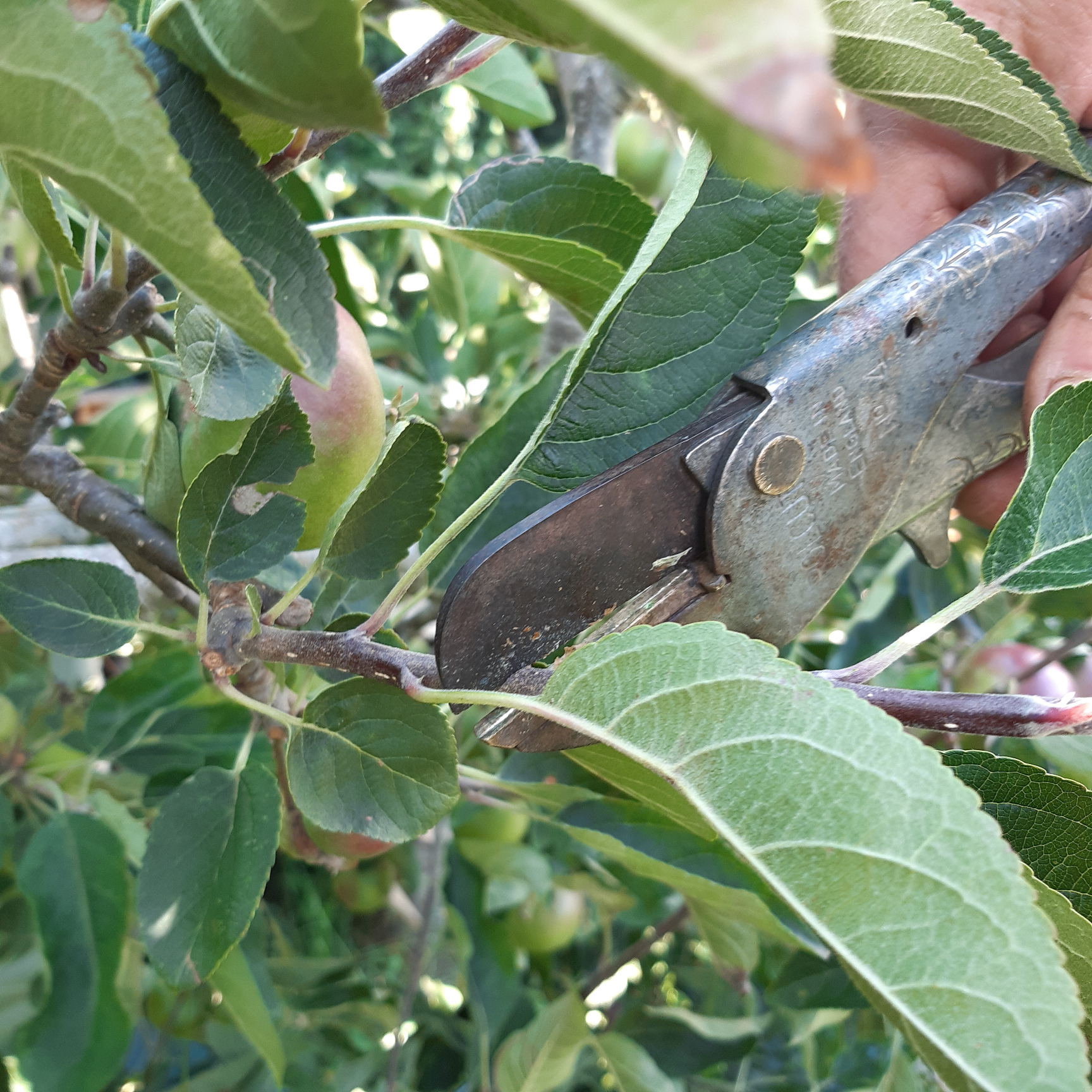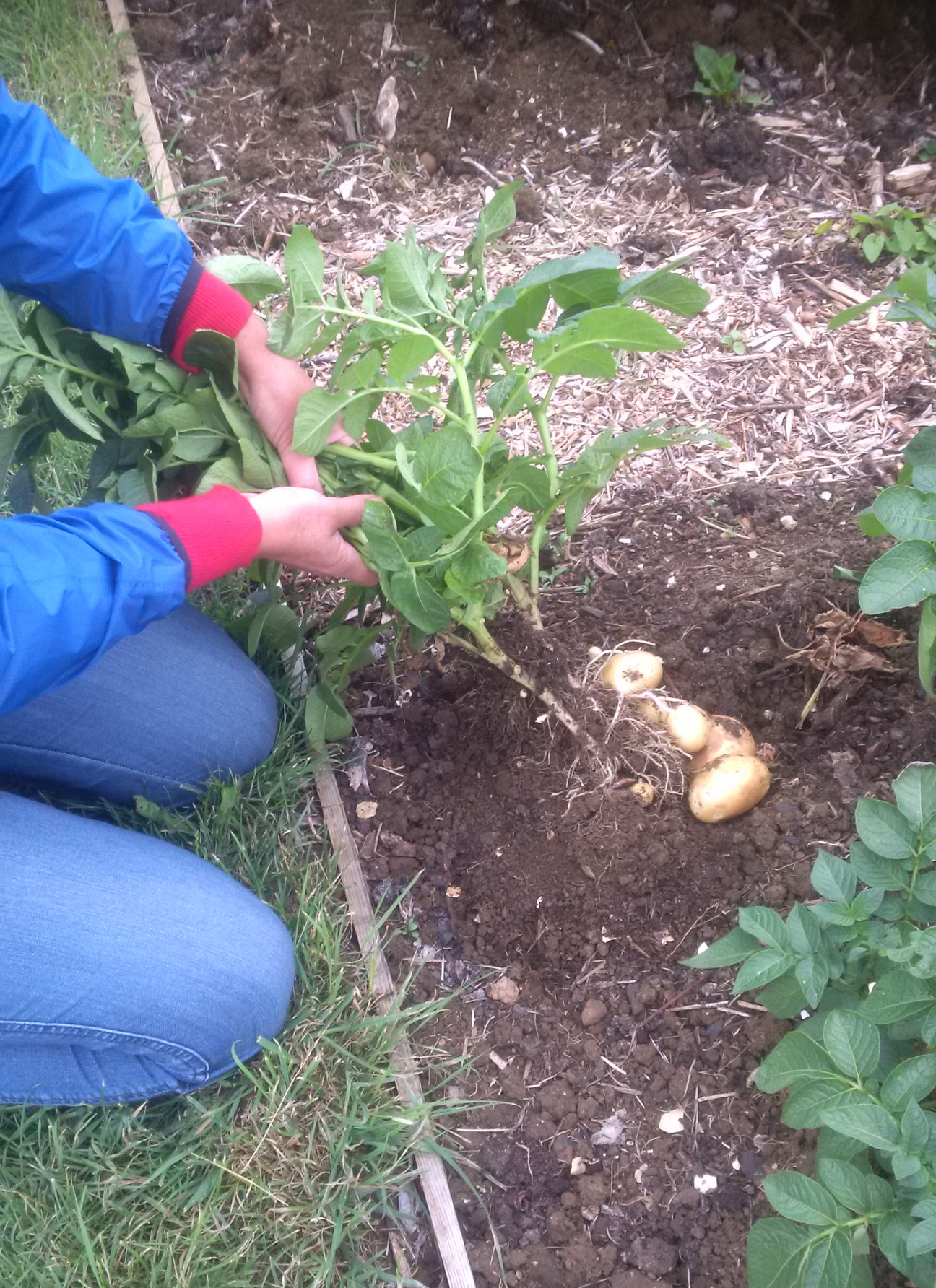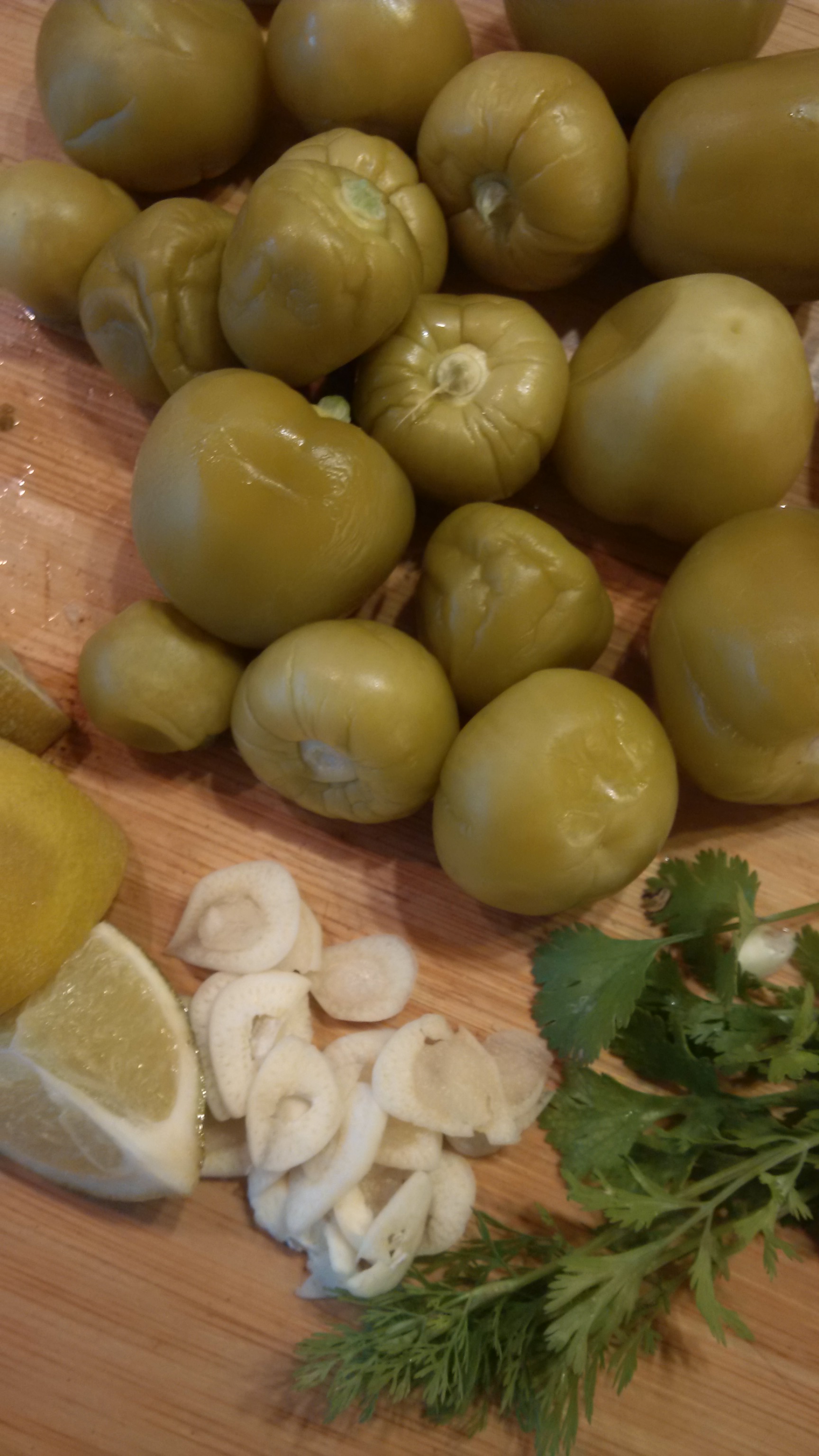One day, some years ago when holidaying in Tuscany, we enjoyed a particularly good bunch of grapes – sweet and juicy but full of seeds! I kept a few of the seeds from the large pile accumulating on my plate and popped them in my box of seeds on our return home. I had completely forgotten about these until early May this year when the turned up in a small envelope and I decided, not very hopefully, to see if they would germinate. Eight weeks went by and the pot was still sitting on our deck outside showing no signs of life and I had all but given up on it when Kirsten noticed a couple of tiny shoots emerging to be followed a day or two later by six more. I now must work out where the vineyard is going to go…

Vineyards and vines are mentioned more than any other plant in the Bible; very important culturally and economically in that area and those times. Because of this, it is often used symbolically in scripture. A fruitful vine was a symbol of obedient Israel, while wild grapes or an empty vine spoke of Israel’s disobedience. Pruning of vines and the bearing of fruit is an important biblical metaphor for how we are strengthened through testing so that our character produces more fruit of the Spirit. And on the allotment, the beginning of July is when thoughts turn to summer pruning of fruit trees to encourage them to bear more fruit in future years.
Pruning top fruit is more usually thought to be a winter activity but not in all cases. 25 or so years ago I bought three ‘maiden’ apple trees (about 1-2 meters tall) to plant at the back of the allotment to train as ‘espaliers’ along horizontal wires running the width of our two plots. These trained trees, when mature, are principally pruned in the summer to open up the tree to let light and air to the ripening fruit and to promote the growth of fruit buds for the following year. In short there are three things to do; remove spindly growths which will not fruit at all; cut back strong new season growth to about 4 leaves. The aim is to stop the tree sending more energy into growing longer new shoots and instead encourage it to form fruiting buds on the short remaining stem which will flower and fruit next year. In the photos I’ve pruned half of the Cox’s Orange Pippin espalier to show you the difference and tried to show you pruning back to 4 leaves. Those ancient Rolcut no.4 secateurs are my favourite – they were my grandfather’s and I still use them today.


You may remember that I mentioned we were experimenting with growing potatoes in a ‘no-dig’ bed. Well the first results are in – see the photo of Kirsten pulling up the first ‘no-dig’ potatoes. The yield is small, but not much smaller than those more conventionally grown. Now we have had some welcome rain, the second earlies and maincrop potatoes might well do better.

And finally, we are drowning in tomatillos –so here’s what we are doing with them. Wash and then blanch them briefly to get rid of the sticky coating and add them to the blender together with some lime juice, garlic and fresh coriander to make a salsa. Don’t let the tomatillos get too soft when blanching them or the salsa will be very watery
